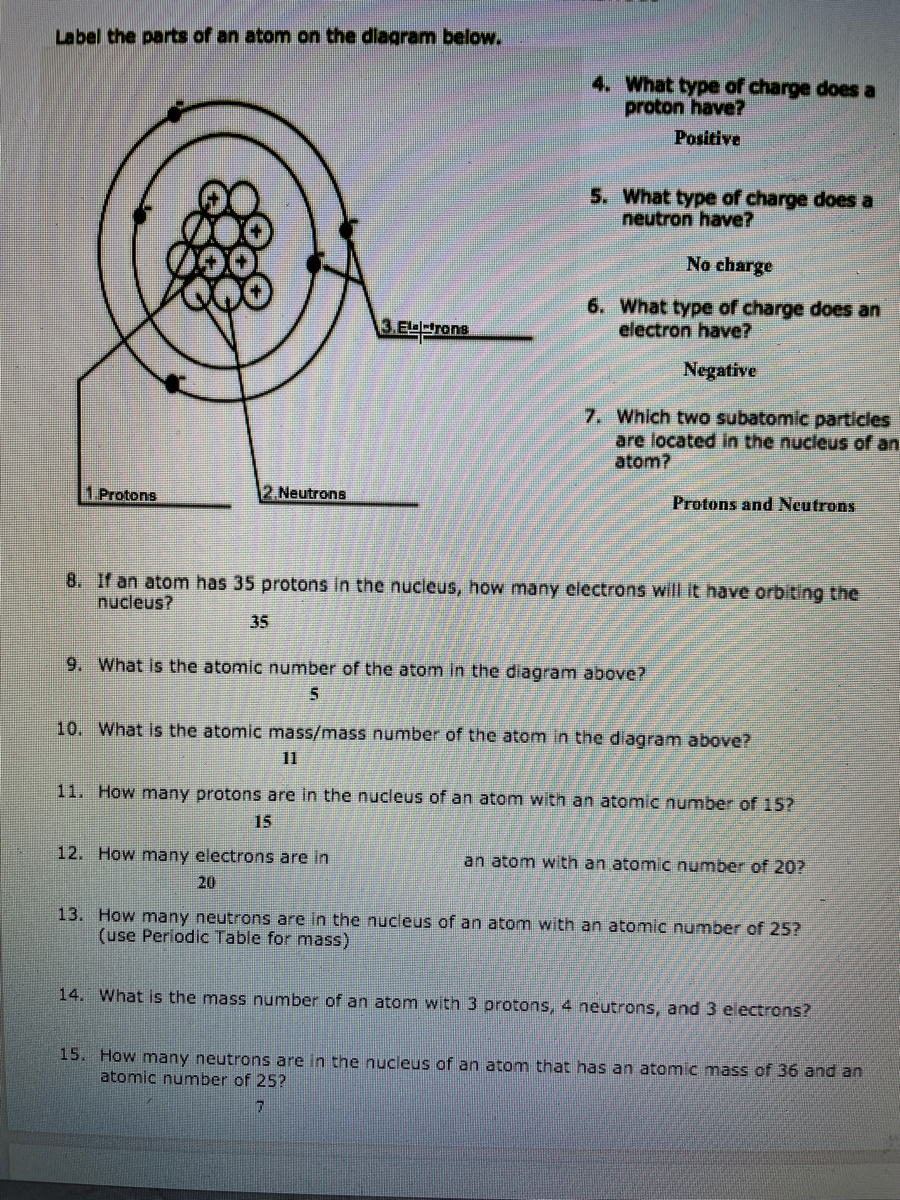- Answer The atomic number is 25. The metal is manganese with valence shell,electronic configuration 3d54s2. The divalent ion M n2+ has valence shell electronic configuration 3d54s0.
- Iron, atomic number 26, has four naturally occurring isotopes. Next Example They are: Fe-54, Fe-56, Fe -57, and Fe-58. From the table, we can see the number of neutrons in each isotope’s nucleus. A nucleon, is a particle that is in the nucleus (either a proton or a neutron). Atomic number (number of protons) Atomic mass number.
- The atomic number is the characteristic feature of an atom. The unique distribution of electrons along atomic orbitals is responsible for the element’s specific chemical and physical properties. Therefore, it’s very important to know and study the electronic configuration of all elements.
- ATOMIC NUMBER 25 Dictionary entry overview: What does atomic number 25 mean?. ATOMIC NUMBER 25 (noun) The noun ATOMIC NUMBER 25 has 1 sense. A hard brittle grey polyvalent metallic element that resembles iron but is not magnetic; used in making steel; occurs in many minerals Familiarity information: ATOMIC NUMBER 25 used as a noun is very rare.
Atomic Number of Elements from 1 to 50. List of first 50 elements of the periodic table by atomic number including the chemical symbol and the atomic weight. You can print the list of elements by hitting the print button below.
Also found in: Thesaurus.
| Noun | 1. | atomic number 25 - a hard brittle grey polyvalent metallic element that resembles iron but is not magnetic; used in making steel; occurs in many minerals manganese, Mn metal, metallic element - any of several chemical elements that are usually shiny solids that conduct heat or electricity and can be formed into sheets etc. hausmannite - a mineral consisting of manganese tetroxide; a source of manganese manganite - a black mineral consisting of basic manganese oxide; a source of manganese psilomelane - a mineral consisting of hydrated basic oxide of manganese and barium; a source of manganese pyrolusite - a mineral consisting of manganese dioxide; an important source of manganese rhodochrosite - a mineral consisting of manganese carbonate; a source of manganese |
Want to thank TFD for its existence? Tell a friend about us, add a link to this page, or visit the webmaster's page for free fun content.
Link to this page:

Atomic Number 253

Atomic Number 25 Electron Configuration
In the modern periodic table, the elements are listed in order of increasing atomic number. The atomic number is the number of protons in the nucleus of an atom. The number of protons define the identity of an element (i.e., an element with 6 protons is a carbon atom, no matter how many neutrons may be present). The number of protons determines how many electrons surround the nucleus, and it is the arrangement of these electrons that determines most of the chemical behavior of an element.
In a periodic table arranged in order of increasing atomic number, elements having similar chemical properties naturally line up in the same column (group). For instance, all of the elements in Group 1A are relatively soft metals, react violently with water, and form 1+ charges; all of the elements in Group 8A are unreactive, monatomic gases at room temperature, etc. In other words, there is a periodic repetition of the properties of the chemical elements with increasing mass.
Atomic Number 25 Element
In the original periodic table published by Dimitri Mendeleev in 1869, the elements were arranged according to increasing atomic mass— at that time, the nucleus had not yet been discovered, and there was no understanding at all of the interior structure of the atom, so atomic mass was the only guide to use. Once the structure of the nucleus was understood, it became clear that it was the atomic number that governed the properties of the elements.
